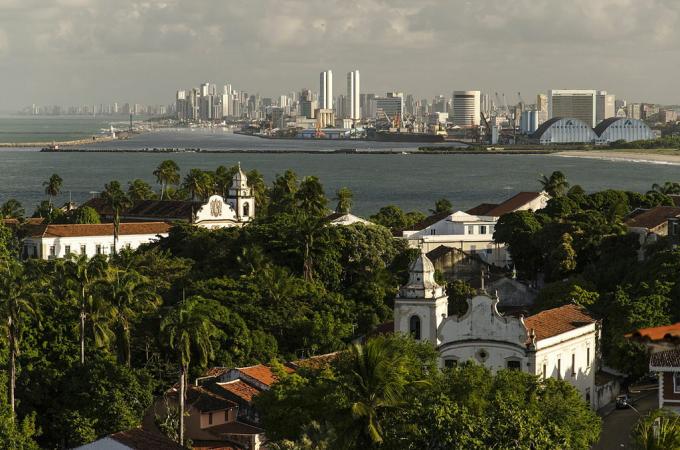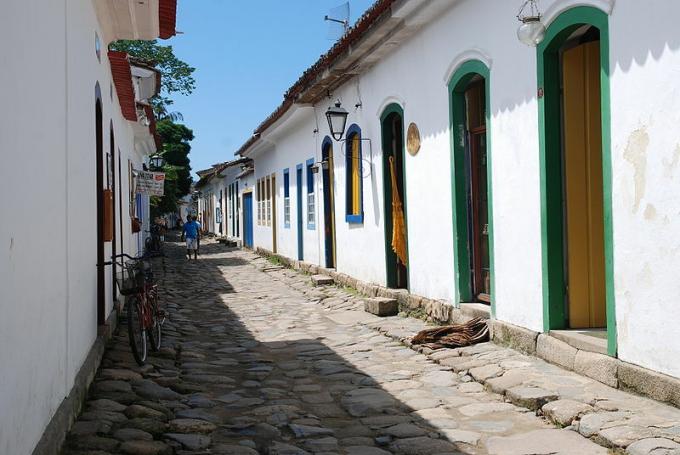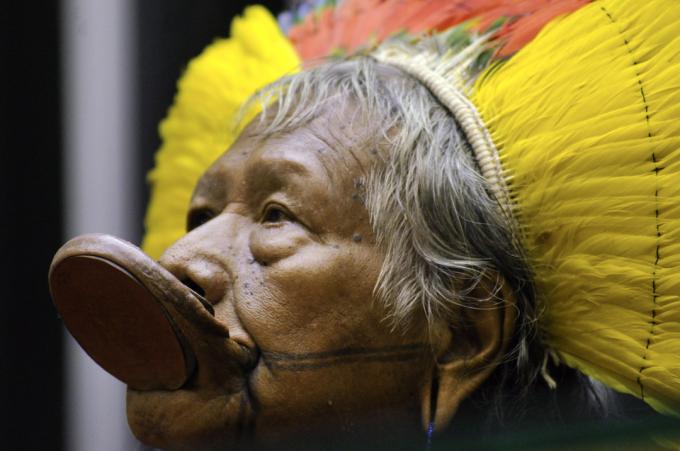Cultural landscape is a landscape that combines cultural and natural elements within a territorial cutout. Also called anthropic landscape or humanized, the cultural landscape is the result of man's interaction with nature.
One of the examples of cultural landscape is the city of Rio de Janeiro, where it is possible to find landscapes that combine natural elements with human interventions.
Created by UNESCO in 1992, the cultural landscape is a category used for the preservation of Cultural Heritage.
Differences between cultural landscape and natural landscape
One natural landscape is the one where the natural elements predominate and where there has been little or no human intervention. In these cases, the landscapes are the result of the action of nature and its modifications are due to environmental phenomena.
 Natural landscape, with little or no human interference.
Natural landscape, with little or no human interference.
One cultural landscape, in turn, is the one where the man caused changes. These changes are due to the ways in which human beings developed their activities of food, communication, culture and locomotion.
 Interaction between cultural and natural elements in the city of Olinda, Pernambuco.
Interaction between cultural and natural elements in the city of Olinda, Pernambuco.
It is important to emphasize that the cultural landscape can be quite dynamic, as the way in which man interacts with the its environment and the techniques it uses for its survival change constantly and these changes are reflected in the territory.
know more about natural landscape.
Cultural landscape and heritage preservation
Cultural landscape is a category for the preservation of heritage, created by UNESCO and regulated in Brazil in 2009, by Ordinance No. 127. From the establishment of this seal, cultural landscape became an instrument of preservation of Brazilian heritage.
According to Brazilian law, the cultural landscape é:
A peculiar portion of the national territory, representing the process of human interaction with the natural environment, to which life and human science have imprinted marks or attributed values.
The body responsible for recognizing a cultural landscape is the Institute of Historical and Artistic Heritage National (Iphan) and the responsibility for preserving these environments rests with both public managers and the community.
We can cite as examples of cultural landscapes in Brazil the relationship between the candando and the cerrado, the sertanejo and the caatinga, the cattle breeder and the pantanal and the gaúcho and the pampa.
Get to know better the thick, a caatinga, O swamp it's the pampa.
Brazilian cultural landscapes and their preservation
UNESCO has a list of recognized cultural landscapes around the world. In Brazil, the city of Rio de Janeiro stands out, which in 2012 was the first urban area in the world to receive the seal of cultural landscape by the organization.
 Rio de Janeiro.
Rio de Janeiro.
In addition, UNESCO has granted the title of cultural landscape to the Pampulha Architectural Set, in Belo Horizonte, and the Paraty and Ilha Grande, in Rio de Janeiro.
 The Church of São Francisco de Assis is one of the buildings of the Pampulha Architectural Complex.
The Church of São Francisco de Assis is one of the buildings of the Pampulha Architectural Complex.
 City of Paraty, Rio de Janeiro.
City of Paraty, Rio de Janeiro.
Other examples of cultural landscapes recognized outside Brazil are: the coffee zone in Colombia, the ancient tequila production facilities in Mexico, rice plantations in the Philippines and the city of Sintra in Portugal.
What is landscape?
For geography, landscape is the configuration of several elements in a given space and that can be perceived by our five senses: sight, smell, touch, taste and hearing.
A landscape can be made up of mountains, trees, buildings, animals, etc. The senses can perceive it by touch, by the sounds of birds, by the sight itself, by the smell of wet grass after a rain, and even by the taste of a fruit picked from the tree.
Learn more about UNESCO and Geographic space.



